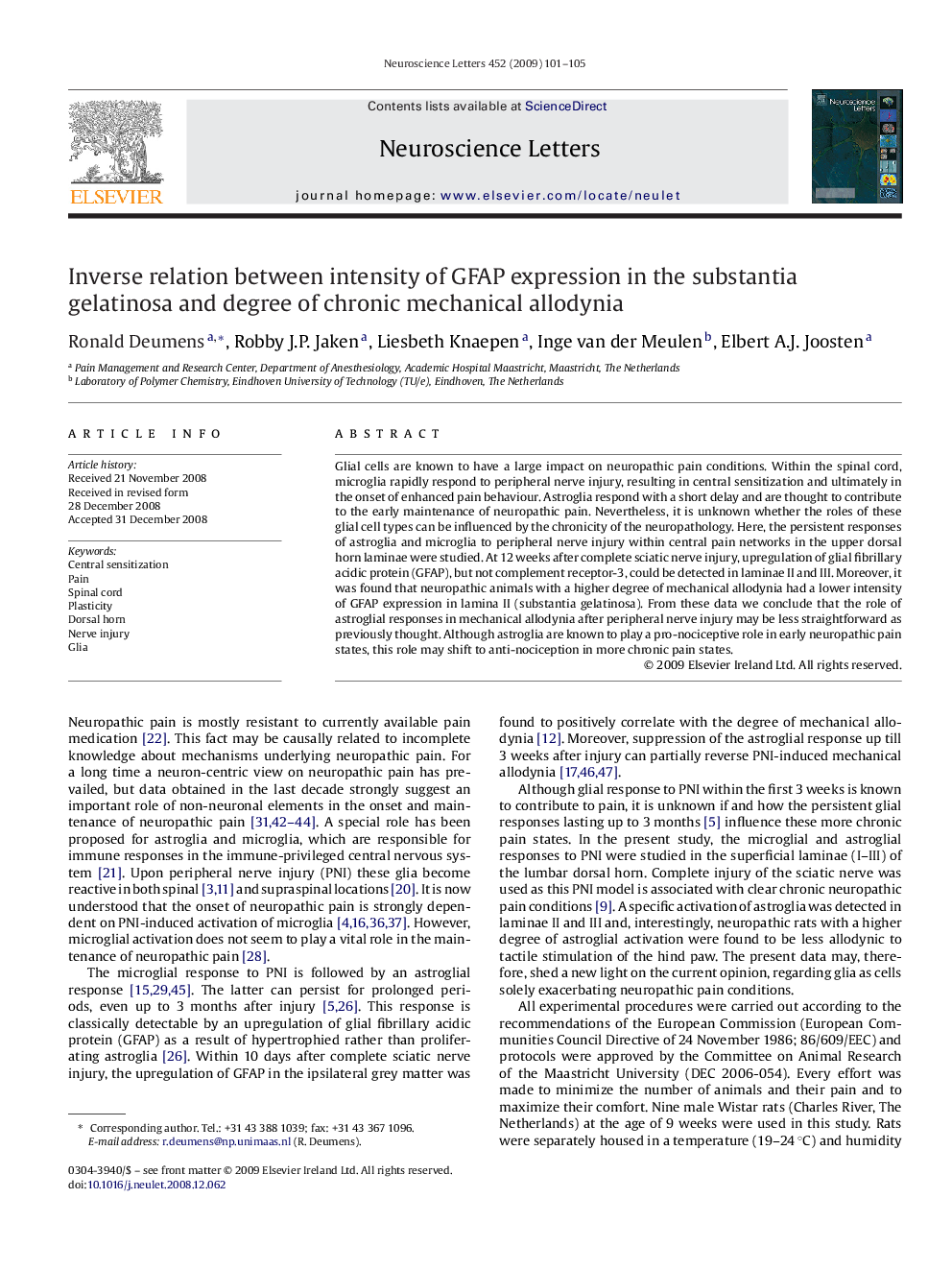| Article ID | Journal | Published Year | Pages | File Type |
|---|---|---|---|---|
| 6285553 | Neuroscience Letters | 2009 | 5 Pages |
Abstract
Glial cells are known to have a large impact on neuropathic pain conditions. Within the spinal cord, microglia rapidly respond to peripheral nerve injury, resulting in central sensitization and ultimately in the onset of enhanced pain behaviour. Astroglia respond with a short delay and are thought to contribute to the early maintenance of neuropathic pain. Nevertheless, it is unknown whether the roles of these glial cell types can be influenced by the chronicity of the neuropathology. Here, the persistent responses of astroglia and microglia to peripheral nerve injury within central pain networks in the upper dorsal horn laminae were studied. At 12 weeks after complete sciatic nerve injury, upregulation of glial fibrillary acidic protein (GFAP), but not complement receptor-3, could be detected in laminae II and III. Moreover, it was found that neuropathic animals with a higher degree of mechanical allodynia had a lower intensity of GFAP expression in lamina II (substantia gelatinosa). From these data we conclude that the role of astroglial responses in mechanical allodynia after peripheral nerve injury may be less straightforward as previously thought. Although astroglia are known to play a pro-nociceptive role in early neuropathic pain states, this role may shift to anti-nociception in more chronic pain states.
Related Topics
Life Sciences
Neuroscience
Neuroscience (General)
Authors
Ronald Deumens, Robby J.P. Jaken, Liesbeth Knaepen, Inge van der Meulen, Elbert A.J. Joosten,
